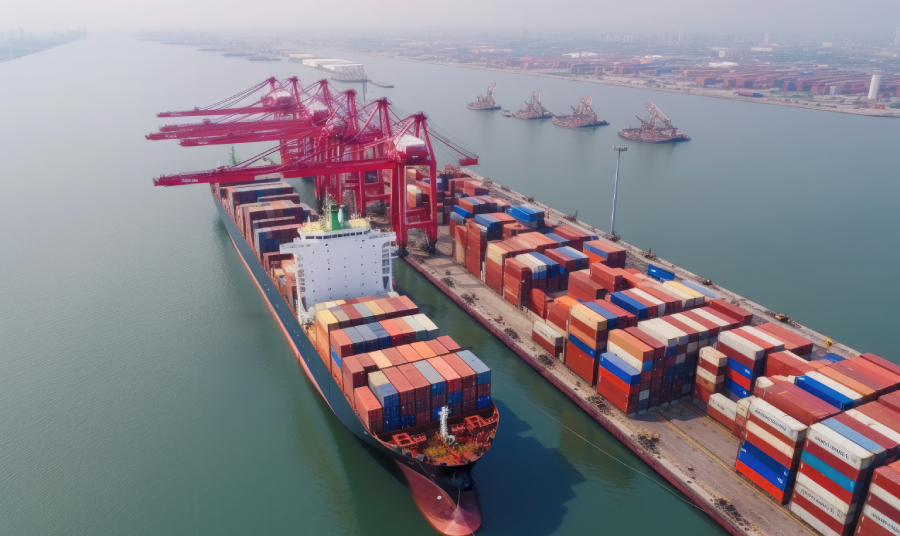E-commerce seller’s guide to importing from China

In the rapidly changing world of e-commerce, sourcing from China has become an appealing prospect for US sellers looking for high-quality goods to help them move ahead of the competition.
In 2022, US imports from China reached the highest recorded levels, totaling $536.8 billion. These figures highlight that despite the ongoing trade disputes between China and the US, there are still many reasons why strong trading relationships between our two countries endure.
For instance, China has an extensive network of reputable suppliers. Known as ‘The World’s Manufacturing Hub,’ China accounts for 28.7% of the world’s manufacturing output – ten percentage points higher than the United States. So, it’s likely that you can find your ideal supplier partner in China, no matter how intricate the product design or how big the order is.
In addition, freight shipping costs from China to the US are now at pre-pandemic levels, falling 80% since 2022. Plus, express air freight delivery can also take as little as one to five days, dispelling outdated misconceptions about slow shipping speeds from mainland China.
With that said, US sellers still need to conduct a considerable amount of research and business analysis to help them successfully navigate the intricacies of importing from China.
This article will guide US importers on the ins and outs of Chinese imports.
Strategic tips for navigating the Chinese supplier marketplace
The first step in your importing journey begins with researching the entirety of the Chinese supplier landscape. You have a vast array of choices, but luckily, the majority of reputable manufacturers in China are listed on Alibaba and AliExpress.
1. Perform due diligence in your China business search
Each of the world’s leading B2B marketplaces has a dedicated search engine to help e-commerce sellers narrow down their China business search.
For instance, if you are using a site like Alibaba or AliExpress, look out for manufacturers that are part of the Trade Assurance program. This scheme is set up to ensure product quality and provide a protected way to pay in case sellers encounter any issues with their orders.
It’s also vital to check out supplier reviews to make sure manufacturers have a proven track record of delivering top-quality goods and services.
2. Use a sourcing agent to help vet your potential suppliers from China
Once you have created a shortlist of reputable suppliers, contact them and request quotes. It’s helpful to work with a Chinese sourcing agent at this stage of the supplier vetting process, as they’ll have an in-depth understanding of typical pricing models. . They can also ensure that your potential manufacturing partners have all the correct export licensing paperwork, preventing shipping delays at the Chinese border.
This is particularly important as China’s State Administration of Financial Exchange (SAFE) issues export licenses and relevant documentation in Chinese. So, ensuring you can check supplier correspondence with a native-speaking agent will make setting up a supplier contract and managing business relationships easier.
3. Order samples and check the quality of goods
Next, reach out to your suppliers and request samples to monitor the quality of goods and services.
Determining the supplier’s minimum order quantity at this stage of the importing process will help you establish your customer pricing and supplier payment terms. You can also gauge delivery times and the company’s returns policies from this crucial quality control check.
Ensure your samples’ packaging is robust, as this will help you minimize the number of returned items from customers. If you encounter any issues, such as damaged items or poor product quality, contact the supplier immediately to request a refund or additional samples that match your product specifications more closely.
4. Create a clear returns policy to protect your customers
US customers will feel more confident in their purchases if you offer a transparent and fair returns policy from your e-commerce website and marketplace storefronts. To create this service, contact your supplier and agree on which items are eligible for return, the expected timeframe, and the process for returning the item (i.e., issuing return merchandise authorization numbers).
It’s helpful to offer prepaid printable returns labels from your website addressed to a US mainland location. And you should also ensure that the original product shipment packaging is durable enough for the customers to reuse to send their items back to you. Using Alibaba and AliExpress’s Trade Assurance service enables sellers to send returned items to a US warehouse for free processing.
5. Assess your finance options for importing from China
Covering importing fees and cargo insurance is a costly investment, so ensure you have the finances in place to facilitate a smooth delivery to the US.
Specific importing fees from China vary depending on the product type and quantity you’re purchasing. Checking the United States Customs and Border Protection (CBP) website can help you calculate your exact costs.
You can finance your imports in several ways, including personal savings, business loans, or trade credit. Alibaba and AliExpress can also help you set up Letters of Credit, where buyers can agree to send order payments in full on an agreed-upon date (letters of credit work as a form of cash advance).
6. Send fast and secure China payments with Zyla
US sellers can pay suppliers in China with US dollars or Chinese (CNH). Each China payment option has pros and cons; your suppliers may stipulate their preferences.
Paying in US currency is more straightforward. However, your supplier may factor in the cost of currency exchange into their pricing, so settling in CNH may save you money.
Opening a free Zyla Account will enable you to send fast and secure China payments in CNH or dollars without spending the extra time and costs of setting up a bank account overseas.
We offer competitive FX rates and no minimum deposit fees, so you can explore the Chinese supplier landscape until you find your best partner.
We also provide customer support with all your buying from China queries, whether you’re looking for advice on finding reputable manufacturers or setting up Forward Exchange Contracts to lock in FX fees for supplier payments over a set period.
To learn more about Zyla’s great benefits in helping you bank like a local in China, click here or call us on (855) 797-3366.



